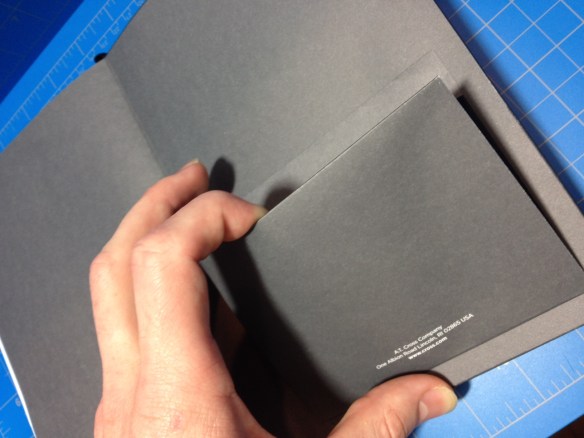My handwriting is very fine, and I always gravitate toward finer and finer tipped pens in my quest to jam as much information on the page as possible. But there is a limit to how small the tip of any given pen can be. Too thin a felt-tip will simply break, and ballpoints or Rapidograph-style pens will either not allow ink flow or damage paper. Thus, even pens on the smaller end of the possible scale are hard to come by (being more expensive and relatively user-specific when compared to more standard sizes), with .25 being about as thin as one can find. Muji, in its characteristic minimalist style, offers a gel pen in such a small size. Is it a worthwhile purchase?

As with many Muji products, the pen is outwardly pretty simple. The hexagonal black body is a little larger in diameter than a pencil, and covered in a matte rubber that is only interrupted by two slits in the plastic near the front (for seeing the ink level) and a set of bumps with the slightest of step downs for posting in the back. After a brief clear plastic part, the metal cone in the front quickly brings us to a very fine protruding ink tube that’s about an eighth of an inch long. The clear plastic cap is also hexagonal, with an integrated clip and matching color insert that both covers the tip and displays the sizing information where it can be read easily from a pencil cup. Other than this, there are no markings on the item itself, as the label comes off, stripping you of all its information(in Japanese).


Performance is good. The pen is comfortable to hold and stays firmly in one’s hand (though the material can make capping and uncapping a bit more “frictionful”). When put to paper, ink flows relatively smoothly. At this size of tip, it is impossible to eliminate all of the scratchiness, but a good job has been done of controlling it. Likewise, another problem at this thinness is that a pen will tend to skip more if at any angle other than perpendicular to the page, but this too has been mitigated. I’d still recommend you write as straight as possible, but it shouldn’t have too great an effect on the writing. I don’t have much information on the ink, but I can tell you that it dries quite quickly (I almost can’t get it to smudge) and it’s waterfast and alcohol resistant (it does bleed a little, but remains legible, which is good for writing and bad for stains). Its spread isn’t too bad either, laying out on the average page about the same thickness as a .25mm (01) technical fineliner (though, with my handwriting both seem very close to a .7 ballpoint).

The pen’s a good one. It’s nice and sleek with a rugged body (I might be worried about the longevity of the cap. though) and a good writing feel. It’s slightly more expensive than a gel pen of comparable quality in the States (the price tag says ¥210, or about $2, but they sell it in the US for $3), but not enough to be out of their range. The tip is noticeably more fine than other ballpoints and gel pens you’ll find, but in my opinion almost awkwardly so (I’ve never been a fan of how gel pens look on the page {when written with my hand}), and there can be potential issues with the pen drying out. Still, if you’re looking for a functional and minimal super-thin writing pen (that isn’t as finicky or fragile as a technical pen) this is one to look at.
























